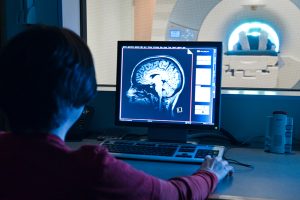一、项目背景
自闭症是一种由脑部发育障碍所导致的疾病,其特征是情绪,言语和非言语的表达困难及社交互动障碍,会对限制性行为与重复性动作有明显的兴趣。很多研究人员怀疑自闭症是由基因控制,再由环境因素触发。自闭症会影响脑中的信息处理,影响方式是改变神经元及突触连接及组织的方式,神经回路是由突触相互连接的神经元群,在被激活时执行特定功能,神经回路相互连接,形成大规模的大脑网络。
二、项目说明
面向对象:对生物学、医学、神经科学、脑科学等方向感兴趣的本科生、研究生,以及勇于挑战的高中生;
软性背景:生物学、医学、神经科学、脑科学等相关专业;
科研导师:哈佛大学医学院导师;
科研形式:实地科研或者远程线上科研,导师授课+练习实战结合,完成课题学习、选题、研究实战及报告撰写;
phase 1:课题基础知识学习,课程+文献阅读
phase 2:确定研究课题,讨论研究思路以及研究进展
phase 3:汇报答辩+报告撰写
科研周期:实地科研:寒暑假期间,前往哈佛大学校内,每期时长为4周(针对假期不足4周的同学,可采取实地+远程相结合的方式);
三、项目/研究课题简介
在本课程中,我们将深入探讨大脑中神经回路的特性如何产生一直困扰着生物医学研究人员的行为。神经回路的功能障碍是多种人类大脑疾病的基础,包括阿尔茨海默病和帕金森病等退行性疾病,以及精神分裂症和抑郁症等精神疾病。我们的目标是更好地了解自闭症患者的皮质回路是如何发生故障的。
四、课题大纲
Week 1
Session 1: Explore the biology of neural Science
Session Goals: Learn some basic concepts of the nervous system (the brain, spinal cord, and peripheral nervous system), its functions and disorders.
Session 2: Understand the development and organization of neural circuits.
Session Goals: A circuit typically refers to a set of interconnected components that together subserve a specific function. A neural circuit in the brain may be a cluster of neurons that receives electrochemical information that the circuit modifies and transmits to other circuits for further modification.
Session 3: Define the elements and processes essential to normal brain function
Session Goals: The brain sends and receives chemical and electrical signals throughout the body. Different signals control different processes, and your brain interprets each. Some make you feel tired, for example, while others make you feel pain.
Some messages are kept within the brain, while others are relayed through the spine and across the body’s vast network of nerves to distant extremities. To do this, the central nervous system relies on billions of neurons (nerve cells).
Session 4: Neural circuit function and malfunction during disease states
Session Goals: Neurological disorders are medically defined as disorders that affect the brain as well as the nerves found throughout the human body and the spinal cord. Structural, biochemical or electrical abnormalities in the brain, spinal cord or other nerves can result in a range of symptoms. Examples of symptoms include paralysis, muscle weakness, poor coordination, loss of sensation, seizures, confusion, pain and altered levels of consciousness.
Week 2
Session 5: Aberrant Brain Plasticity in Autism Spectrum Disorders
Session Goals: Plasticity enables the human brain to adapt to developmental challenges and rapidly changing environmental demands, acquire new skills, and cope with injury. However, aberrant or mistimed brain plasticity can lead to maladaptive brain changes, unstable structural connections, and a breakdown of functional systems necessary for normal cognition and behavior
Session 6&7: Introduction to Implicit Association Test and Harvard Project Implicit
Week 3 Online lecture
Session 8&9: Paper Discussion
Week 4 Online lecture
Session 10: Paper Discussion
五、项目收获
◆ 深入学习该领域知识和研究方法,积累科研经历和经验;
◆ 完成学术科研报告或者科研论文;
◆ 优秀学员将获得导师推荐信,助力世界名校申请;
◆ 学术成果有机会在专业国际学术期刊或EI/CPCI国际会议收录发表;
◆ 积累学术领域人脉;
◆ 有机会参加校内的讲座/专家研讨/学术活动等。






